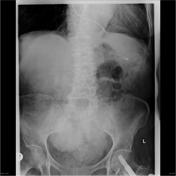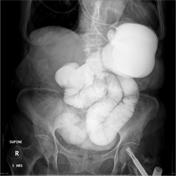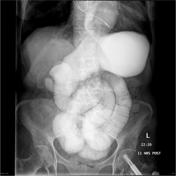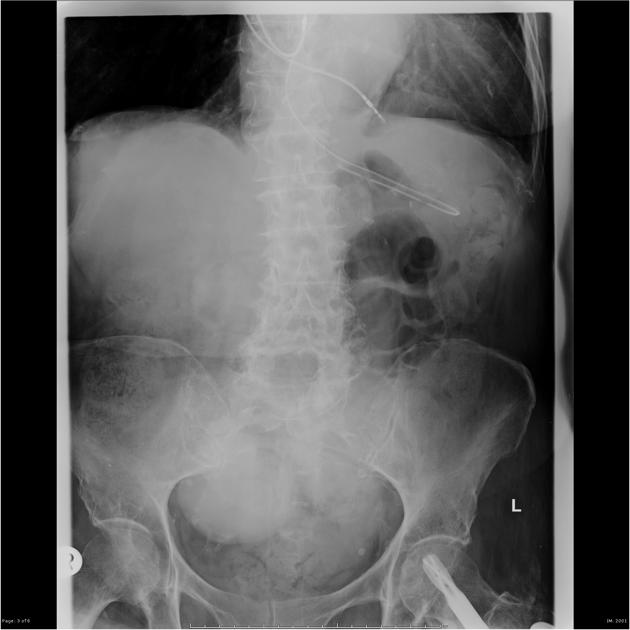Presentation
Known small bowel obstruction. Previous bowel resection for diverticulitis. Study performed to see if resolution of bowel obstruction had occurred.
Patient Data





200 mL of Gastrografin was administered via an NGT after a preliminary film had been taken.
Results
Preliminary film. Gastrografin had been administered 24 hours previously.
Six hours after contrast administration the small bowel opacifies showing dilated loops measuring up to 5 cm. On the 11 hour film the contrast remains within the small bowel without progression into the colon and this is confirmed on the 16 hour film. Fecal material is seen within the colon. Pacemaker leads, left hip screw and costal cartilage calcification are noted.
Conclusion
Features consistent with a persistent small bowel obstruction.
Case Discussion
Small bowel obstructions (SBO) are a common surgical condition with significant morbidity and mortality. Small bowel follow-through contrast studies can be used to for diagnostic and/or therapeutic effects. Typical appearances of a SBO on a water-soluble contrast challenge include dilatation of the small bowel without opacification of the large bowel. Perforation is a late complication of small bowel obstruction; in this case Gastrografin was the preferred contrast agent over barium because of the risk of barium peritonitis.




 Unable to process the form. Check for errors and try again.
Unable to process the form. Check for errors and try again.